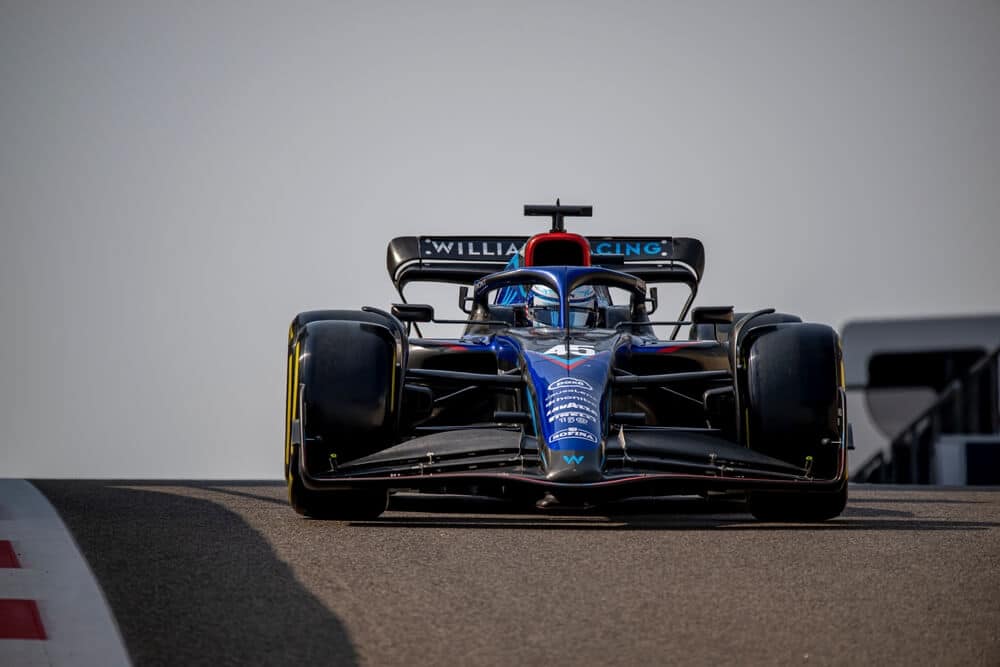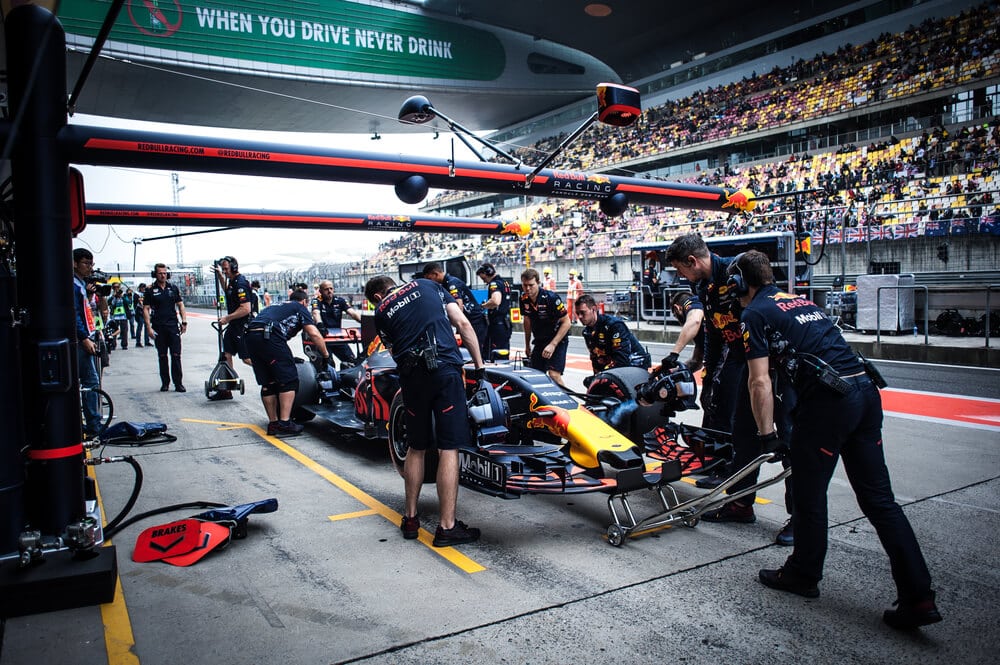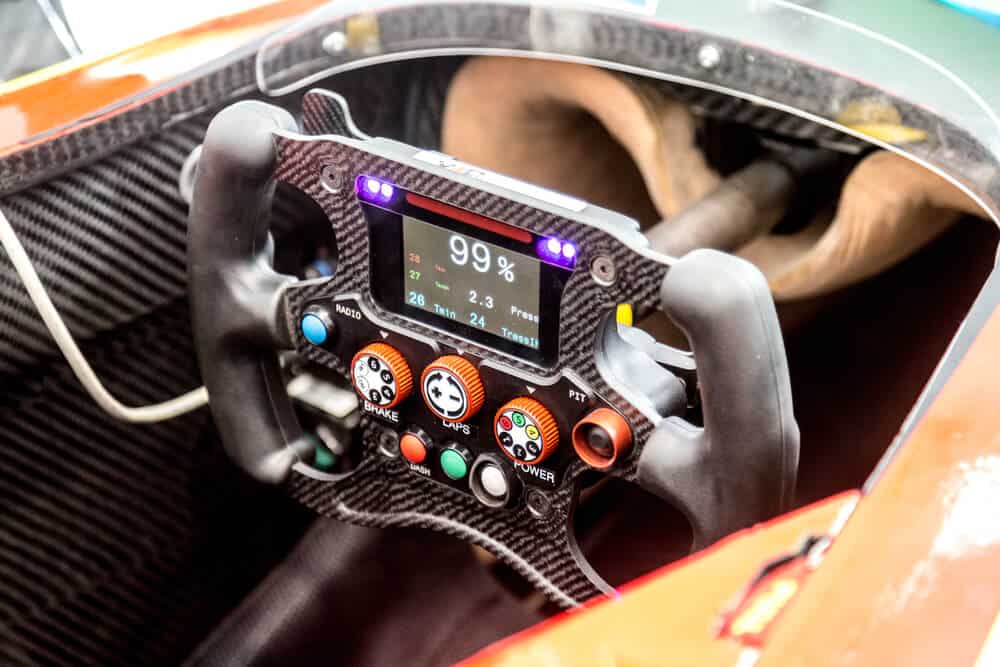Considering that the top dogs’ budgets in 2021 were around the $450 million mark, you can certainly question where that money went. Since Formula One is the most distinguished form of racing, it draws the most talented drivers, administrators, and engineers that money can buy. After that, you need to consider the expenses associated with research and development and the difficulties of traveling to each event. In 2021, there were 22 races on the Formula One schedule; the following year, there were 23 races. The expenses mount up very rapidly.
How exactly can Formula One teams turn a profit when there are so many costs to consider?
How do the Formula One teams generate their money?
The funds of Formula One teams come from various important sectors, including the following:
- Sponsorships
- Formula One makes payments to the drivers and manufacturers of the cars.
- Formula One teams may generate the highest revenue through sponsorships, making this option the most attractive financial option.
Following that, there are opportunities to win prizes and get incentives from Formula 1. The finances of some Formula One teams are then augmented by payments from various manufacturers or by a participant known as a “paid driver,” such as Lance Stroll or Nicholas Latifi.
Table of Contents
Are Williams Racing in trouble?
Does the Williams F1 team produce a profit?
The Formula One industry was taken aback in May when it was revealed that the Williams F1 team was going to be put up for sale. Considering the company’s history and the amount of support it receives from its audience, you might argue that Williams is a dormant giant. This is because they have traditionally achieved a lot of success.
Key takeaways
- Williams decided to take action after the Team lost $13,25 million in 2018, in contrast to a profit of $21 million in 2018. As a result of the pandemic’s effects, it was anticipated that there would be a greater number of casualties this year.
- The winning percentage in the Constructors’ Championships was 20%.
- The proportion of drivers that win their championships is 15.6%.
- 14.6% of all instances are won.
- Rob Wilson, the head of the department of finance, accounting, and business systems at Sheffield Hallam University in England, whose expertise is in the economics and governance of professional team sports, stated that the Team had a lot of promise as an investment and that he thought investors should consider purchasing the Team.
- During the 1980s and 1990s, Williams was a dominant team in Formula One, winning nine constructors’ titles and seven drivers’ championships.

Understanding how Williams F1 earns their money
Williams takes home prize money and profits from other sponsorships, thanks to their success in Formula One.
In addition, Williams has a branch known as “advanced engineering” that is responsible for providing “technology and engineering services.” For example, they were the ones that came up with the battery solution for Formula E.
The Jaguar C-X75 is the most intriguing project that WAE has worked on. The hybrid powertrain and 1.6-liter twin-turbocharged inline-four engine provides the C-X75 with a combined output of 862 horsepower. Williams had first designed the basic 1.6-liter inline four-cylinder engine for Formula One. Still, when Bernie and Ferrari successfully lobbied for a change to go with 1.6-liter inline six-cylinder engines instead, the project was abandoned. Although a more traditional Jaguar V8 will power it, the C-X75 will be the vehicle of choice for the villain in the next James Bond film. Williams Advanced Engineering was responsible for constructing all of the C-X75 vehicles used in the film, including the five stunt cars.
They developed a flywheel system for Porsche racing cars and a system for public bus transportation at their Williams Technology Centre in Qatar, which is located in Qatar. The center’s primary focus is on hybrid technology.
In addition to that, you can hire out both their wind tunnel and their conference facilities from them.
They are also entitled to a legacy payment from FOM because they have been involved in the sport for a long time. The most recent Concorde deal set the price at $20 million.
It's interesting to note that Williams has been one of the most vocal opponents of Formula One moving in this particular direction. Over the last several decades, it has steadfastly opposed efforts to water down the definition of a constructor, even though doing so would bring about cost savings and be of value to Williams, which does not have a rich sponsor.
Williams revenue and profit compared to other F1 teams
One significant distinction sets Formula One apart from other open-wheel single-seater racing championships. Documents provided by the F1 company make it abundantly clear that “to be eligible to compete, a Team must be a ‘constructor,’ which means that it must design and construct certain important parts of its cars itself, including the chassis, which means that every Team’s cars are unique.” This information is presented in a manner that is both understandable and straightforward.
It’s interesting to note that Williams has been one of the most vocal opponents of Formula One moving in this particular direction. Over the last several decades, it has steadfastly opposed efforts to water down the definition of a constructor, even though doing so would bring about cost savings and be of value to Williams, which does not have a rich sponsor.
It reflects recent statements by Claire, who said, “We are a constructor.” Frank and Patrick spent decades fighting for our nation’s freedom; throughout that time, they performed an outstanding job representing us. Maintaining our autonomy is one of the many obligations that fall to me. And the significance of this cannot be overstated for us.”
Formula One has helped encourage an arms race by mandating that all teams compete as constructors, which might have been avoided if the series had used customer vehicles instead. Williams didn’t give up, and now, strangely, the company could be the one to pay the ultimate price for it.
Even while O’Driscoll successfully increased Williams’ sales and maintained a solid bottom line, the company has nevertheless been outspent by its competitors, who have stronger funding, as was revealed not too long ago. This is mirrored in the Team’s performance, as they finished fifth the previous year and are presented in the last position. This is a direct outcome of this. Liberty Media, the new owner of Formula One, has said that it aims to remedy this discrepancy by restricting team budgets to $150 million, which is near to the amount that Williams spent on F1 in 2018, which was about $175 million.
If Williams’ spending continues to be outdone by its competitors, the Team’s chances of victory will decrease, as will its potential earnings from sponsorship and prize money. It explains why Claire recently indicated that if the strategy to control expenditures goes off course, Williams would be forced to shut its doors since this new information shows why that statement is true.
Frequently asked questions
Who owns Williams's F1 Team?
Is owning an F1 team profitable?
Conclusion
While F1 teams make a profit, the vast majority of that money is re-invested into research and development of cars.
While racing has a hefty price tag, automakers regard it as an investment in a marketing strategy that will pay out in the form of increased sales.
During the 2021 Formula One season, Brazil, Germany, Italy, the United Kingdom, and the Netherlands were the five most popular countries to watch the sport on television.
With 66.7% of the global TV market, Europe far outpaces the next largest market, Central and South America, with 22.1%. Asia Pacific follows with 5.1%, North America with 3.4%, and Africa and the Middle East with 2.8%. The typical F1 watcher is 38 years old, composed of 62% males and 38% women, with 0.44 children.
As the sport of Formula One continues to grow in popularity in the United States, reaching a wider and wider audience with each race weekend, sponsors are keen to join on board.
Article sources
- https://www.reddit.com/r/formula1/comments/3lg6ob/where_does_williams_money_come_from/
- https://f1chronicle.com/do-f1-teams-make-money/#How-do-F1-teams-make-money
- https://en.wikipedia.org/wiki/Williams_Grand_Prix_Engineering
- https://www.carscoops.com/2022/02/how-does-an-f1-team-spend-450-million-in-a-year-and-still-make-a-profit/
- https://www.nytimes.com/2020/12/11/sports/autoracing/williams-F1-new-owner.html
- https://www.forbes.com/sites/csylt/2018/04/29/the-real-reason-the-williams-f1-team-will-close-if-it-doesnt-get-a-budget-cap/?sh=32c7d11821d4



